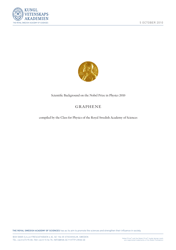Nobel Prize in Physics 2014: Blue Leds - Filling the World With New Light
The Nobel Prize in Physics 2014 was awarded for the invention of efficient blue light-emitting diodes (LEDs), which have allowed the development of energy-saving white light sources and contributed to technological advancements in lighting and displays.
The Nobel Prize in Physics 2014 for the invention of blue LEDs was awarded to Isamu Akasaki, Hiroshi Amano, and Shuji Nakamura.
FAQ
Q: When was the Nobel Prize in Physics 2014 awarded?
A: The Nobel Prize in Physics 2014 was awarded on October 7, 2014.
Q: Who won the Nobel Prize in Physics 2014?
A: The Nobel Prize in Physics 2014 was awarded jointly to Isamu Akasaki, Hiroshi Amano, and Shuji Nakamura.
Q: What invention or discovery led to the Nobel Prize in Physics 2014?
A: The Nobel Prize in Physics 2014 was awarded for the invention of efficient blue light-emitting diodes (LEDs) which has enabled bright and energy-saving white light sources.
Q: What is the significance of blue LEDs?
A: Blue LEDs have revolutionized the lighting industry by allowing the production of energy-efficient white light sources, which has numerous practical applications.
Q: Why are blue LEDs important?
A: Blue LEDs are important because they enabled the development of energy-efficient white LED lighting, which has a wide range of applications and significant energy-saving potential.
Q: Who were the recipients of the Nobel Prize in Physics 2014?
A: The Nobel Prize in Physics 2014 was awarded jointly to Isamu Akasaki, Hiroshi Amano, and Shuji Nakamura.
Q: What field of research did the Nobel Prize in Physics 2014 focus on?
A: The Nobel Prize in Physics 2014 focused on the field of light-emitting diodes (LEDs) and the development of efficient blue LEDs.












